Handbrake has recently upgraded to the new 1.0.0 version with many new features and functions. For users who plan to encode H.265 with Handbrake 1.0.7, you may surprised to find that the new Handbrake adds Intel QuickSync Video for H.265/HEVC encoder and also the x265 encoder quality improvements especial using tune grain. The following part will show you how to encode H.265 with best quality and small file size with Handbrake 1.0.7 settings.
Guide to encode H.265 with Handbrake 1.0.7
Step 1: Input source file.
Lauch Handbrake on your computer, Input the file you want to be transcoded by clicking the large Source button and then File (clicking Folder allows you to easily set up batch encodes). Then set a destination by browsing to whatever folder you desire.
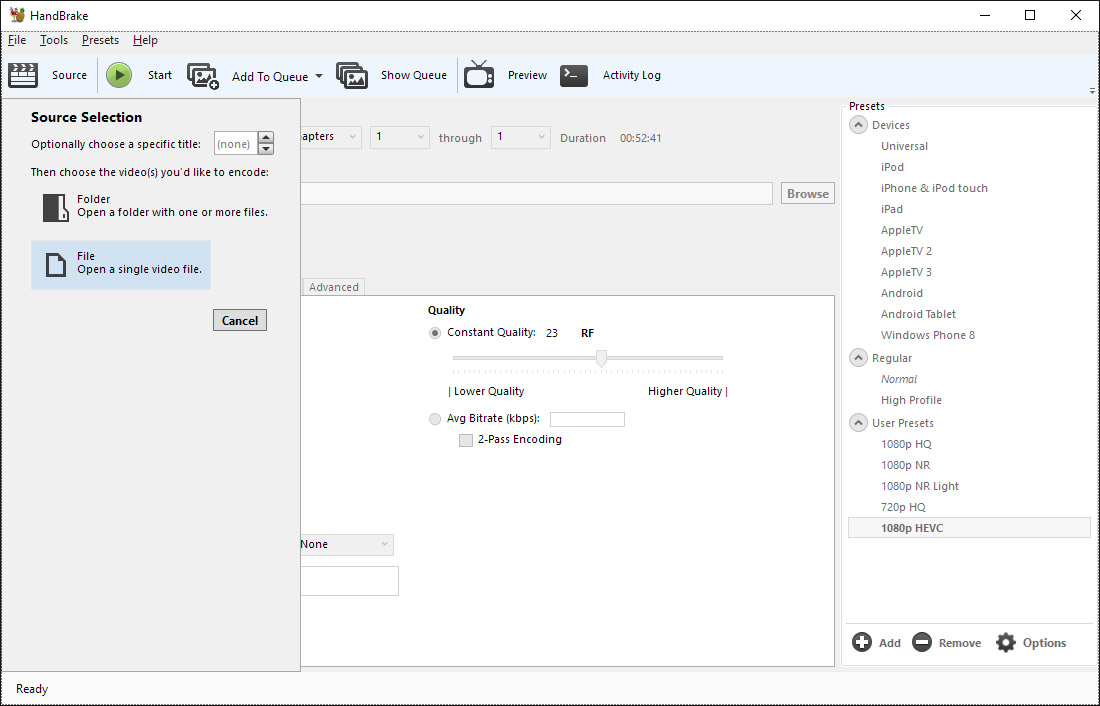
Step 2: Choose output file container format and codec.
Click the "Video" tab, change the video codec from H.264 to H.265 (x265). Also make sure to change the container from MP4 to MKV so that you can embed subtitles if you want to.
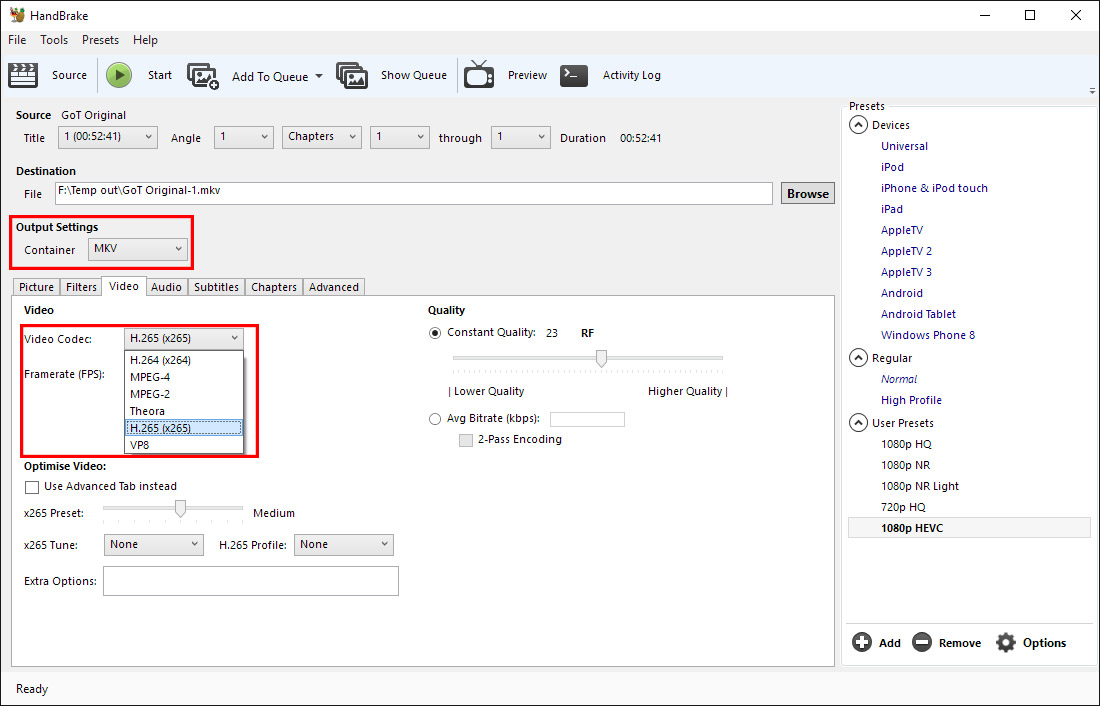
Step 3: Adjust picture settings.
Head to the Picture tab, and set Anamorphic mode to strict. Also check to make sure the automatic cropping feature has detected the correct settings. Sometimes it will erroneously crop out a few pixels on any side, but you can address this by switching to custom with 0 set in every location box. If, however, you have a 21:9 video encoded in 16:9, the cropping feature will automatically crop out the black bars at the top and bottom.
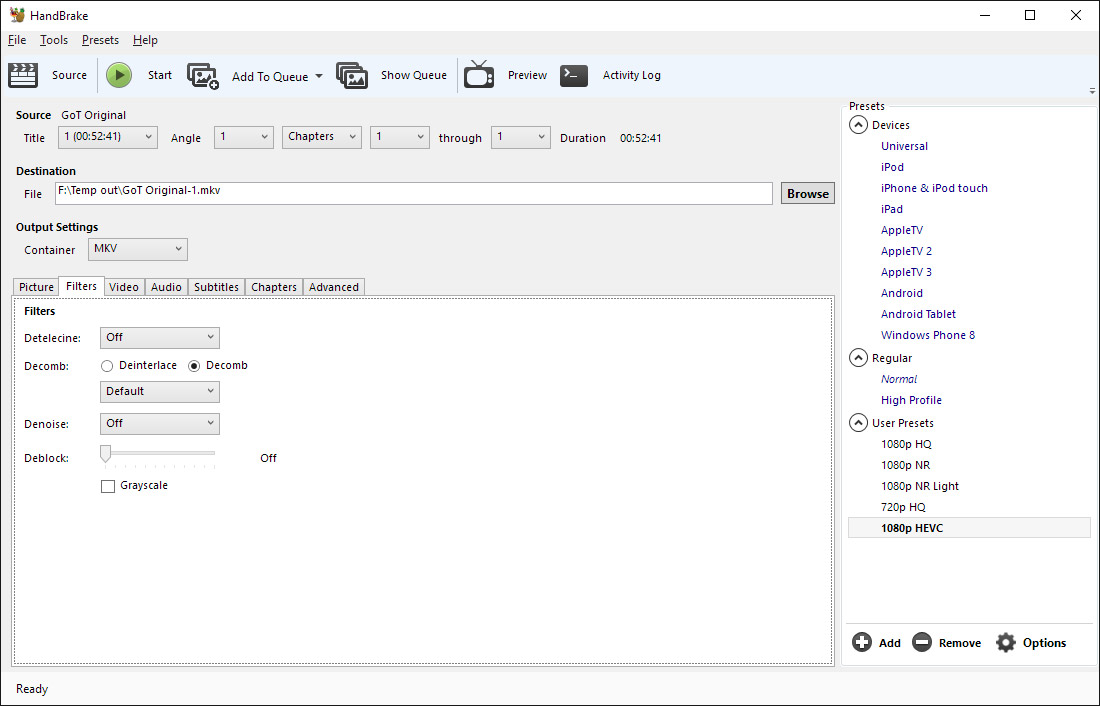
Step 4: Tweak filters settings.
In the Filters tab, you'll only want to modify these settings where necessary, leaving everything else 'off'. If a TV show is interlaced, for example, it's a good idea to set Decomb to Fast as this will only deinterlace frames that are visibly interlaced. If you want to remove noise or grain from a source, setting Denoise to hqdn3d with a custom preset of 1:1:4:4 is a solid choice.
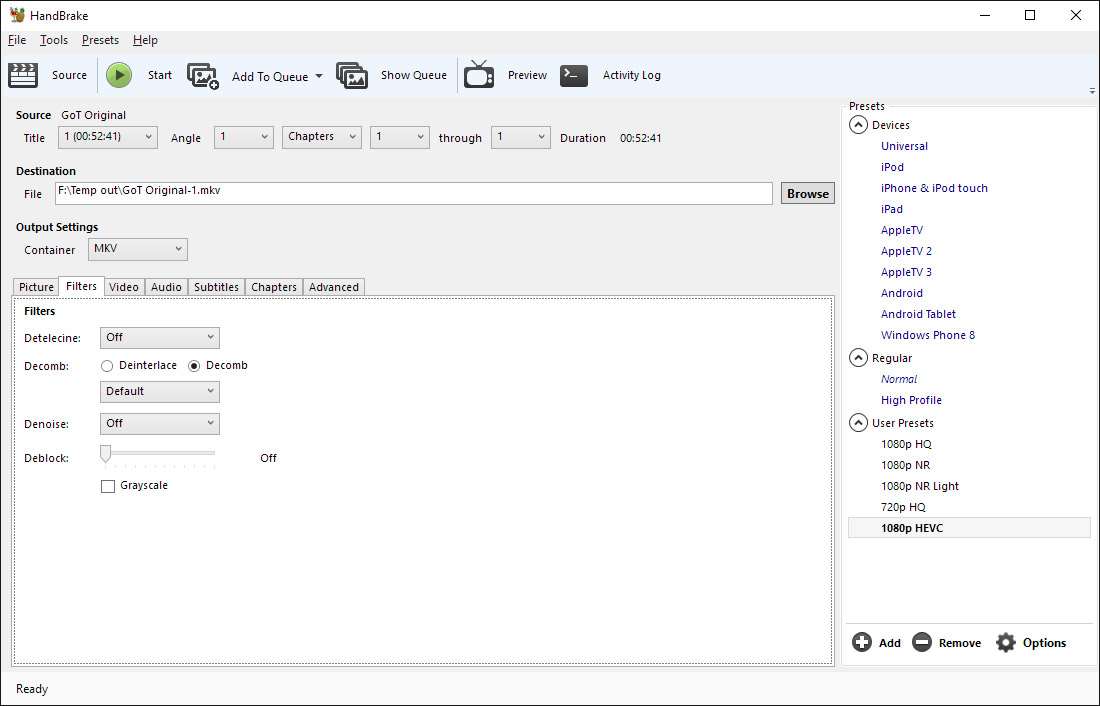
Step 5: Optimize output H.265 video preset.
In the Video tab you'll want to select some specific settings. Make sure framerate is set to 'same as source' and that the 'Use advanced video tab instead' box is unchecked.
Then, select an x265 preset of Medium by adjusting the slider down from the default Ultrafast setting. On the next page I'll explore how the x265 preset determines encode times, file sizes and quality, but basically you want to leave it on Medium for the best balance of encode time and file size. Setting it higher will result in a larger file and faster encodes, and setting lower will reduce the file size at the expense of significant longer encode times.
As for quality, set this to Constant Quality with a value of 23 for 1080p videos, and slightly higher (22) for 720p videos. This is the slider you'll want to experiment with the most: adjusting it closer to 0 gives better quality and higher bitrates, while moving it the other way has a negative effect on quality and delivers smaller files. I find 23 to be a great balance between quality and file size, although if you're willing to put up with more compression artefacts, experimenting with 25 or lower is a good idea. However, I wouldn't go any lower than 30 or any higher than 15 for the best results.
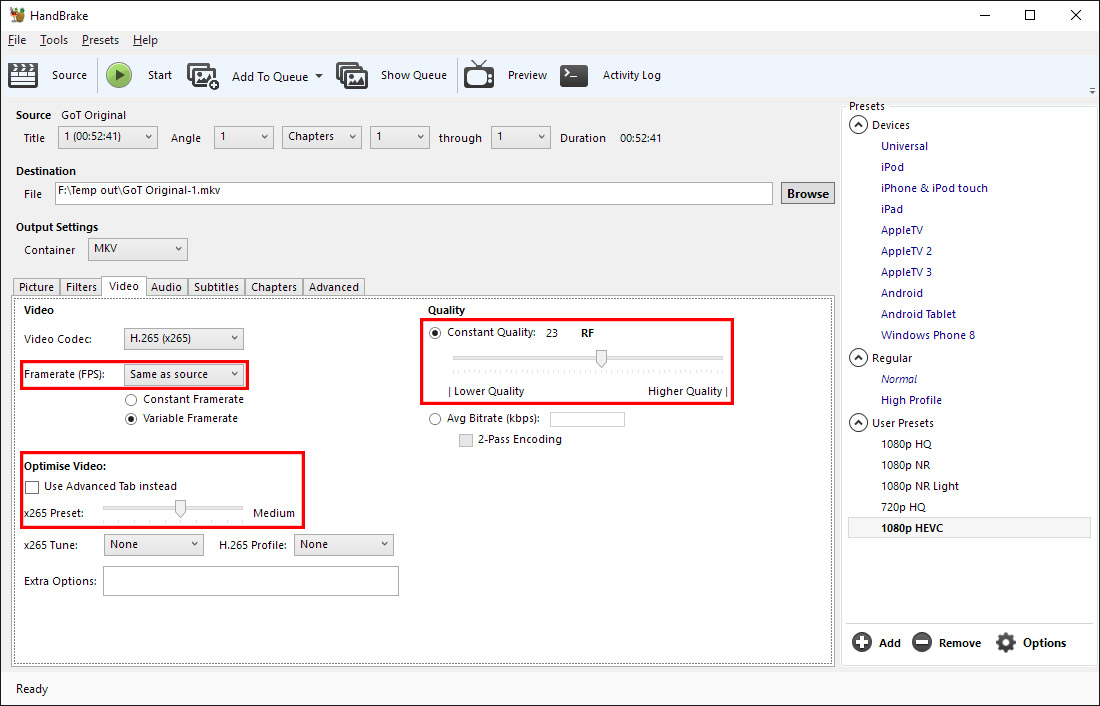
Step 6: Optimize output H.265 audio preset.
In the Audio tab you can change the codec to HE-AAC (FDK), the bitrate to 256, and the mixdown to 5.1 channels. If your source has only 2.0 channel audio, leaving the setting on 5.1 will still encode only 2.0 audio; in other words, it won't transform a stereo source into surround sound using any filters or magic. Here you might want to play with bitrates to whatever you desire, although I think 256 delivers great quality for TV show audio.
Optional: Pass through any subtitles from your source by heading to the Subtitle tab, clicking Add Track, then selecting Add All Remaining Tracks. From here you can also "burn in" subtitles, which codes the text into the video stream so you can see the subtitles on video players that don't support in-file subtitles (though you can't turn off the subtitles). Setting subtitles to "forced only" tells a video player to display subtitles even when the audio track matches your set language: this is useful for displaying a subtitles when dialogue isn't in English; for example, during alien conversations in a sci-fi film.
Optional: Save these settings as a preset so you can revisit them easily in the future.
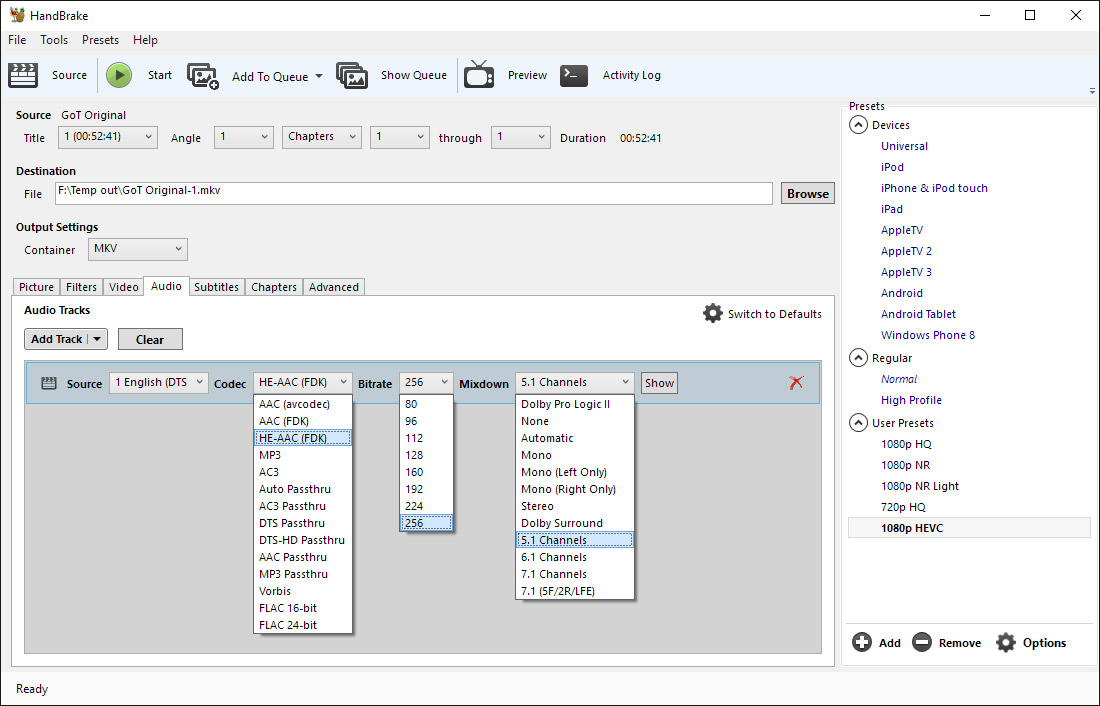
Step 7: Start H.265 encoding process.
Click Start and let the encode happen, which may take a considerable amount of time depending on your hardware. After the encode is done, text saying'finished' will appear in the bottom left corner.
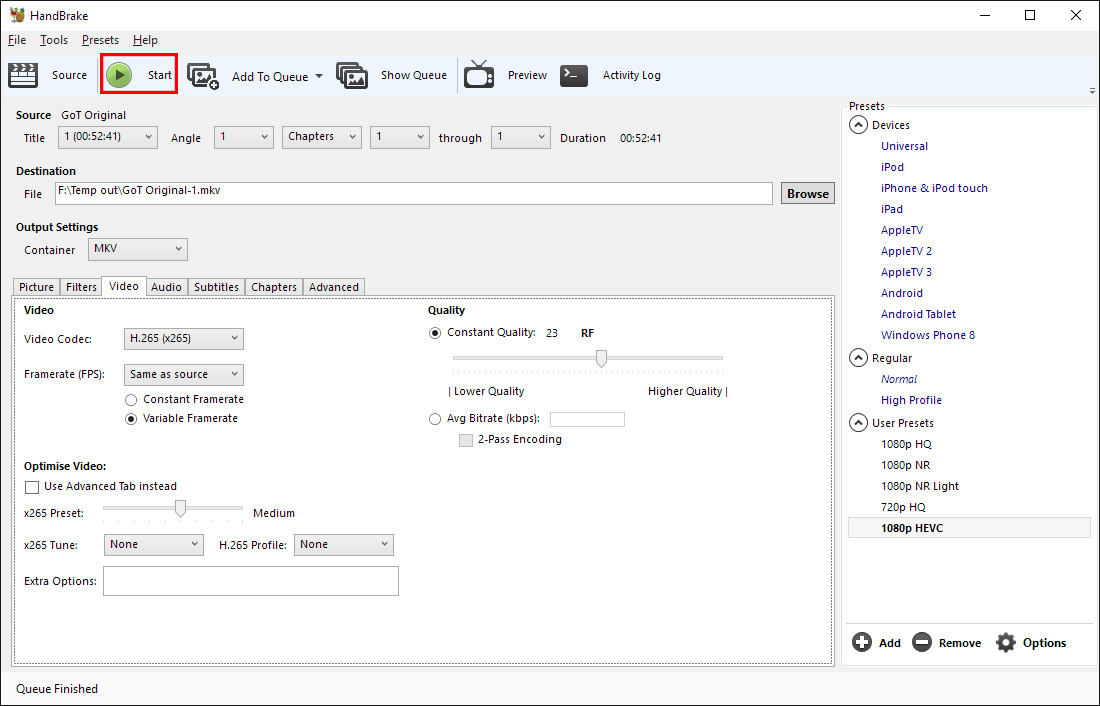
Best Handbrake 1.0.7 version alternative to encode H.265
If you are looking for a fast way to encode H.265 video, you can turn to Pavtube Video Converter Ultimate which supports H.265 encoding acceleration on a PC with Nvidia Maxwell (GM2016) or Pascal GPU graphic card enabled. The program can comprehensively encode encode virtually any digital video file formats and also commercial Blu-ray/DVD disc into H.265 MP4/MKV format. The encoding speed can be accelerated about 30X faster than before.
Tips: The Nvidia GPU hardware accelerate encoding with Pavtube Video Converter Ultimate or other Windows software won't produce as good quality at the same bitrates compared using Handbrake, but essentially the quality of Nvidia HEVC encodes is equivalent to a good H.264 encode, albeit with a much faster encode time.
How to Fastly Encode Video/Blu-ray/DVD to H.265/HEVC with Pavtube Video Converter Ultimate?
Step 1: Import video or load Blu-ray/DVD disc into the program.
Start the program on your computer, click "File" > "Add Video/Audio" to import digital file formats into the program, for load Blu-ray or DVD disc, insert your DVD disc into your computer's optical drive and your Blu-ray disc into an external Blu-ray drive, click "File" > "Load from Disc" to load Blu-ray/DVD disc into the program.
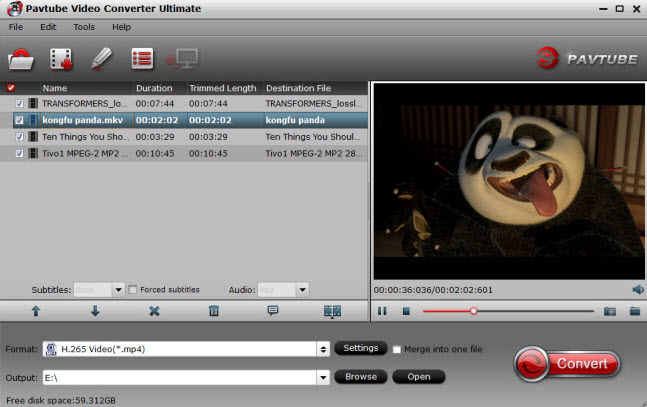
Step 2: Enable GPU Encode Acceleration.
Click "Tools" > "Options", in the opened "Options" window, click "Acceleration" menu, then check "Enable GPU Encode Acceleration" otpion so that the program will accelerate converion speed when encoding video/Blu-ray/DVD to H.265/HEVC codec.
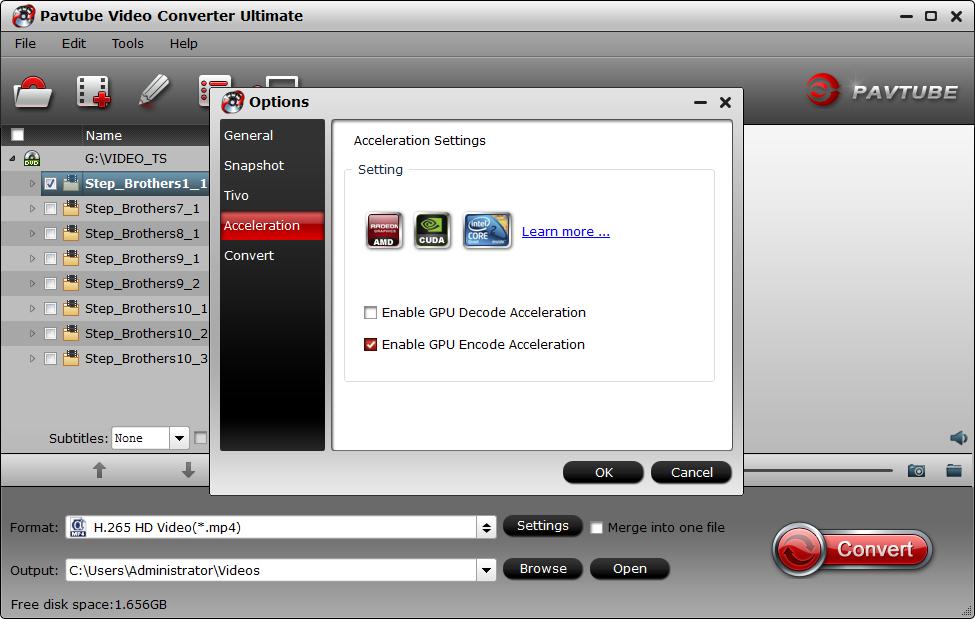
Step 3: Output H.265 MP4 or MKV format.
Click "Format" drop-down bar, scroll down to select "Common Video" > "H.265 Video(*.MP4)" as the output file format.
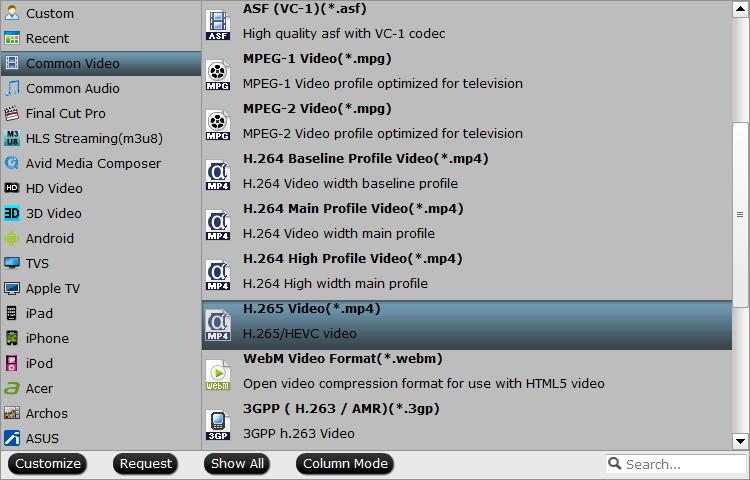
For outputting H.265 MKV format, select "HD Video" > "MKV HD Video(*.mp4)" to output, then hit "Settings" on the main interface to open "Profile Settings" window, under Video settings panel, click "Codec" drop-down selection, choose "H.265" as your final output file codec.
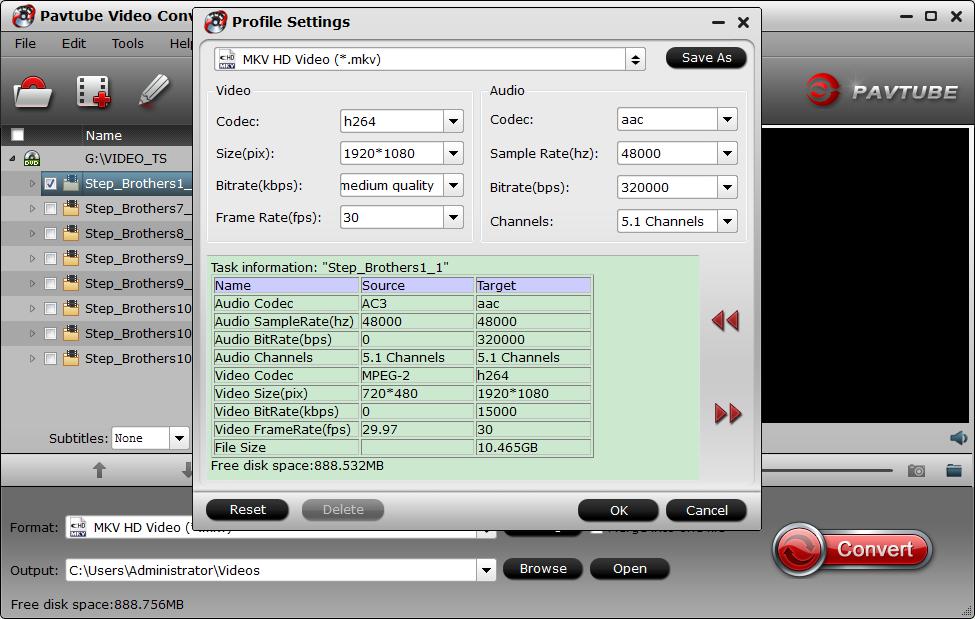
Step 4. Adjust output file parameters (Optional)
You are allowed to adjust video and audio parameters if you are not satisfied with the default settings. Presets like size, bitrate, frame rate, audio channels, etc. can be customized in your own way.
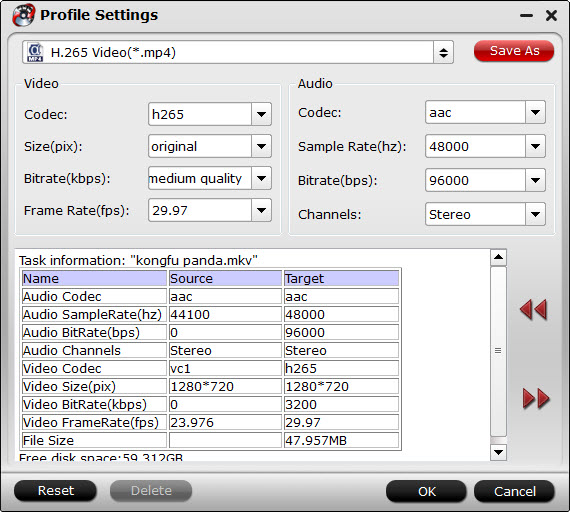
Step 5: Begin the H.265/HECV codec encoding process.
After all settings is completed, hit right-bottom "Convert" button to begin the conversion from video/Blu-ray/DVD to H.265/HEVC encoding process.
When the conversion is completed, you will get a perfect quality H.265/HEVC file with smaller file size for smoothly viewing and streaming on different devices.



